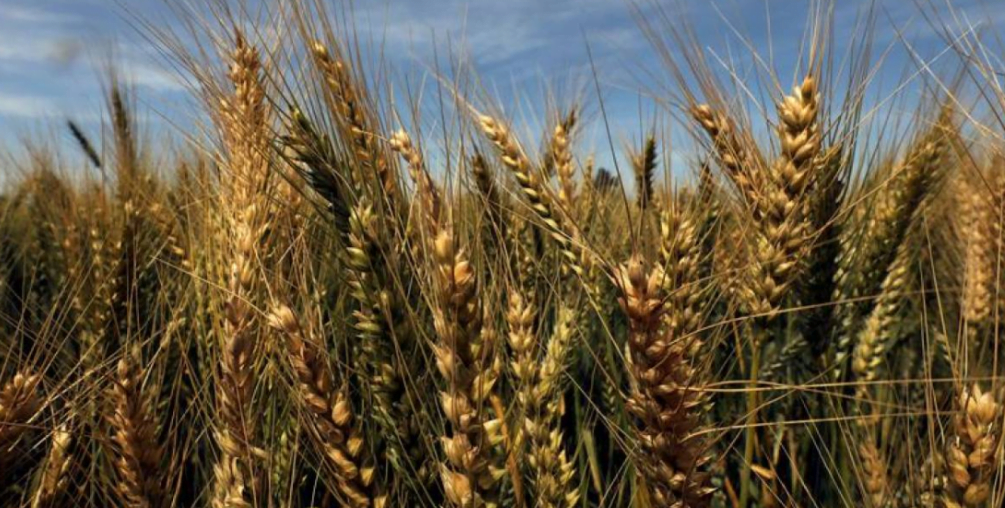By Dr Tiberio Chiari
Much of the 750 million tons (MT) of wheat produced globally is under threat due to the ongoing war between Russia and Ukraine, the two top wheat-producing countries. The disruption is taking a heavy toll on the global food value chain as the two countries are also top exporters of wheat. Africa is one of the hardest hit regions by the disruption as the continent still relies mainly on wheat imports to bridge its production shortfalls.
The United Nations Food Agriculture Organisation in a recent report, stressed the need for Sub-Saharan Africa, which accounts for a mere 1.4 per cent of the total wheat produced in the world, to ramp up its food production levels to stave off hunger and recession arising from food shortages/price hike occasioned by the ongoing supply chain disruption.
Especially, Nigeria, the most populous country in sub-Saharan Africa, has to put in some work to ensure its 200 million population is fed consistently.
The country will have to act fast to bridge the huge gap between wheat import and local production since a large part of its population relies on quick meals such as bread and pasta. The gap between wheat import and local production stands roughly at over 4.5 metric tons. Improved government intervention is necessary to arrest the widening production gap. Essentially, wider government support for smallholder farmer cooperatives and the millers is critical to achieving a quick turnaround along the value chain.
Interestingly, the country can look to Ethiopia, the leading wheat-producing country in Africa and the second-most populous country on the continent, to learn what works and what may not work in the development of a robust wheat value chain.
Having worked in a managing role in the Ethiopian wheat value chain for some time now, I quite understand the terrain. I also strongly believe that Nigeria can adopt a series of measures to improve its wheat production and to reduce its import level.
Below are a few points to consider. Like Nigeria, Ethiopia has not attained total wheat production sufficiency for demographic reasons and new consumption habits in urban areas.
In Ethiopia, wheat consumption is customary since centuries with its cultivation diffused across quite all the territory. Total demand is over 6.5 million tons per year, exceeding local production by about 1.5-2 million tons. Like in Nigeria, importation is therefore a common practice in that country.
For decades, the Ethiopian government has promoted structural interventions for increased in-country wheat production and the effectiveness and efficiency of its value chain. The government strategically continues to deepen its partnership with the farmers’ cooperatives and the millers association to achieve the wheat production expansion agenda. Below are the highlights of government intervention in the Ethiopian wheat value chain:
Launch of suitable growth policies and follow-through execution
The government keeps working harder to ensure the country’s current dependence on wheat importation (of about 1.7 million tons) is fully nullified. After years of field experimentation, in 2021, the Ethiopian government launched a new plan it tagged “Irrigation-based Wheat Production: A transformation from Import to Export”.
The objective of the plan is to cut down the import of wheat by producing during the cold season in pastoral dry areas currently available in the Awash, Omo and Shebelle river basins. The approach includes the cultivation of 400,000 hectares of land and the deployment of a large-scale commercial farming model to achieve a productivity of 4.4 tons/ha.
Support for local farmers and establishment of cooperatives across production levels
The international purchase of fertilizers and pesticides, including distribution to farmers at subsidized prices; the promotion of mechanized farming (mainly ploughing, spraying and harvesting), and the multiplication and distribution of certified seeds are some of the valuable areas where the government has consistently stepped in to enhance the performance of the wheat production/processing industry.
The government identified the farmers’ cooperatives, comprising 4.7 million smallholder farmers, as strategic players for achieving the desired economy of scale both in the delivery of services (promotion of innovative technologies, distribution of input, hiring tractors and harvesters) and in the collection of produce/marketing (storing and cleaning of the product, bargaining with intermediate and final buyers).
Essentially, the Ethiopian government has a long track record of policies formulation specifically addressing the establishment and improvement of cooperatives at primary, secondary and tertiary levels. This is because the cooperatives reinforce social stability, link young and elder generations (i.e. innovative and conservative aptitudes), dialogue with local authorities and other stakeholders, and are able to internally absorb economic and climatic shocks.
Support for millers
Interestingly, to ensure millers produce wheat derivative foods at affordable prices for the Ethiopian populace, the government usually counteracted food price spikes by importing huge tons of wheat and delivering them to registered mills at a subsidized price.
In this scheme, the millers take the obligation to provide bread loaves to the population at a fixed reduced price, with authorities acting for any needed control.
The financial burden for wheat import is particularly high for the Ethiopian treasury and its hard currency reserves. Therefore, massive wheat imports are emergency strategies for preventing social suffering and possible civil disorders.
Other areas where the government has continuously intervened are the wide provision of storage facilities and market information systems to smallholder farmers across the country. The government also provides tax exemption for the import of agro-processing equipment for milling, pasta making, and bakery for players. Also among the government intervention efforts are the establishment and recurrent strengthening of the wheat research centres, both at central and local levels.
The impact of government interventions in the Ethiopian wheat value chain
So far, remarkable results have been achieved in the Ethiopian wheat value chain, recording significant increases in yield from about 1.3 tonnes per ha in the nineties to 2.8 at present. The country’s annual wheat production since 2020 has reached around 5.1 million tonnes and above. Wheat import currently is at 1.5 million tonnes per annum, about 25 per cent of total national consumption. The government is not relenting in its growth effort yet. It keeps ploughing development funds into the wheat development programme.
What can Nigeria learn from the Ethiopian Government?
Although Nigeria has unique topographic and climatic conditions that are quite different from what is obtainable in the top wheat-producing countries, by working closely with the farmers’ cooperative unions, providing necessary input support for the members of the unions, as well as providing incentives for the millers, it can reduce the current burden on millers, the farmers and the consumers.
Increased support for farmers’ cooperatives as part of the wheat development plan
Worthy of note in the Ethiopian case study is that the farmers’ cooperatives are strategic in any wheat production development plan. Cooperatives demonstrate their commercial reliability in taking and duly respecting contracts of production. For guaranteeing a win-win strategy, industries and cooperatives must agree that at the obtainment of quality raw material a premium price is paid.
Cooperatives manage all aspects of field production, duly coordinating the individual farmers: training and assisting on-field management practices; distributing the certified seed, fertilisers and pesticides as needed for achieving the expected level of production (both in quantity and quality); storing the harvested product; dialoguing with the agro-processors and agreeing on a final price; collecting the money and distributing it to individual members by quota for their contribution.
Effective monitoring of policy execution
Also, an enabling institutional environment is fundamental. Local authorities ought to watch for possible breaches of contract agreement by the key value chain players in the wheat development programme. The public control bodies could intervene, as a third party, to analyze samples and certify their quality.
Provision of warehousing/storage facilities
Facilities like warehouses for the temporary storage of produce must be provided as a critical asset to enable cooperatives to fulfil their engagements with the final buyer. The provision of wider storage facilities in the wheat farming belts in the country will reduce field losses. This effort will also help smallholder wheat farmers maintain the quality and a high nutritional value of wheat derivative foods sourced from local produce.
In sum, Nigeria has a huge population that consumes over 10 million loaves of bread besides pasta daily.
Current realities are exposing this population to suffer needless hunger, and this scenario is unlikely to abate soon, on the contrary it is worsening. Jointly with emergency measures, the government needs to review its wheat development plan as to improve its effectiveness and impact on food security of people.
Dr. Tiberio Chiari
Former Manager of the Agricultural Value Chains Programme in Oromia- Ethiopia,
within the Ethio-Italian Development Cooperation Framework

 Join Daily Trust WhatsApp Community For Quick Access To News and Happenings Around You.
Join Daily Trust WhatsApp Community For Quick Access To News and Happenings Around You.


